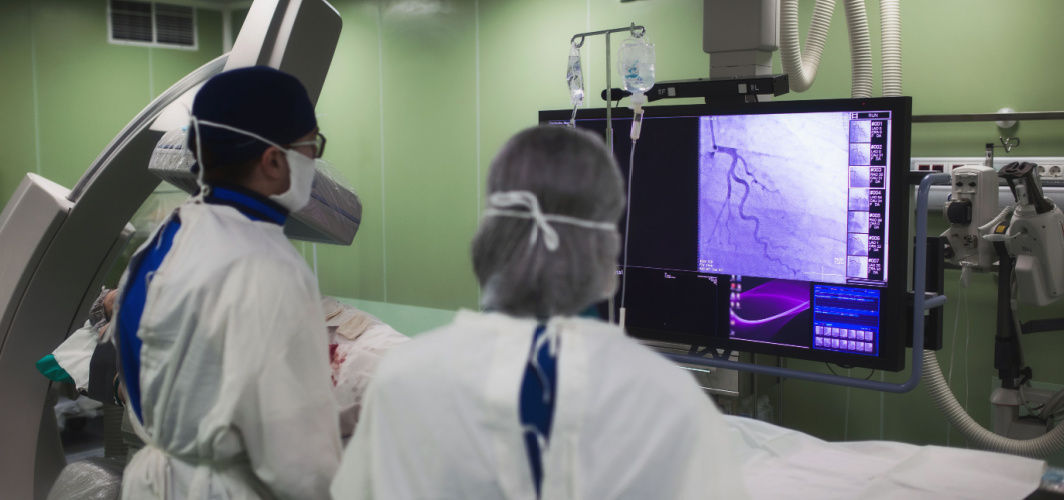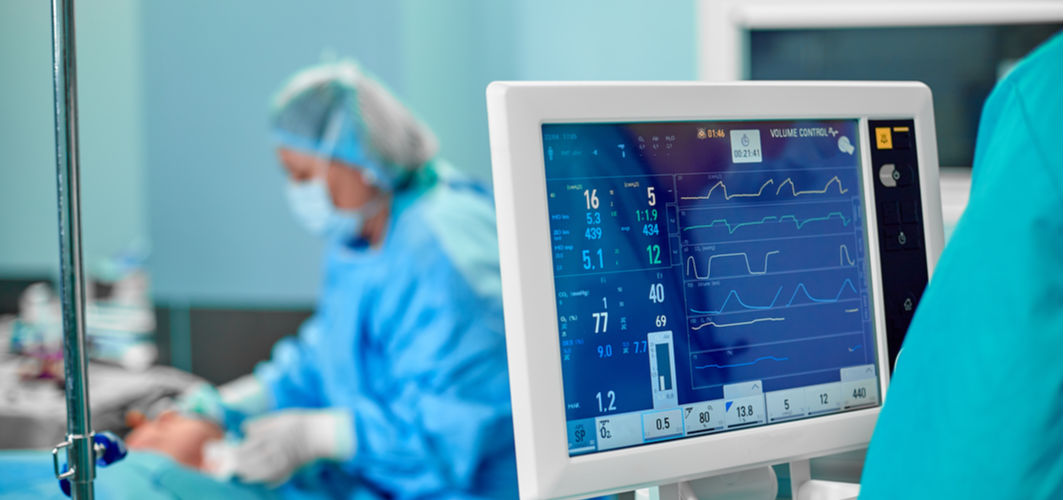Heart Conditions
Know The Difference Between Angiography And Angioplasty
8 min read
By Apollo 24|7, Published on - 18 July 2023
Share this article
0
0 like

Angiography and angioplasty are vital procedures used for diagnosing and treating heart conditions. Understanding the difference between angiography and angioplasty enables patients to make well-informed decisions regarding their cardiovascular health. With India's high prevalence of cardiovascular deaths (272 per 100,000 people), understanding these procedures becomes even more crucial. In this article, we will delve into the details of angiography and angioplasty, including their definitions, procedures, benefits and risks.
What is Angiography?
Angiography is a medical procedure that uses imaging techniques to visualise blood vessels in the body. It is primarily used to diagnose and evaluate conditions such as blockages or narrowing in the blood vessels.
Procedure and Process of Angiography
Here is an overview of the procedure and process of angiography:
1. Administration of Contrast Dye
The process involves the administration of a contrast dye, which helps to highlight the blood vessels during imaging. A catheter is inserted into a vessel, commonly in the arm or groin, while X-ray images capture the dye's flow through the vessels.
2. Imaging Techniques Used During Angiography
Angiography utilises diverse imaging techniques like X-ray, CT scan, MRI and ultrasound. Each method possesses unique strengths and limitations, determined by factors like vessel location and the specific condition under evaluation.
Benefits and Risks of Angiography
Angiography can provide valuable diagnostic information; however, it is important to weigh the risks and benefits before undergoing the procedure.
1. Benefit
Angiography is highly effective in identifying blockages or narrowing of blood vessels, allowing doctors to accurately diagnose conditions like coronary artery disease, peripheral artery disease or aneurysms.
2. Potential Complications or Side Effects
Angiography is generally safe, but rare risks exist. These include:
- Bleeding
- Bruising
- Allergic reactions
- Vessel/organ damage
- Radiation exposure
Skilled medical professionals can effectively manage these risks.
What is Angioplasty?
Angioplasty is a minimally invasive procedure performed to treat narrowed or blocked blood vessels, usually in the coronary arteries of the heart. Its primary purpose is to restore normal blood flow to the affected area, alleviating symptoms and reducing the risk of complications associated with reduced blood flow.
Procedure and Process of Angioplasty
The procedure involves the following:
1. Balloon Angioplasty Technique
During the procedure, a thin tube called a catheter is inserted into a blood vessel, usually through the groin or wrist. The catheter is guided to the blocked or narrowed artery using X-ray imaging. Once in position, a balloon at the tip of the catheter is inflated to widen the artery and improve blood flow.
2. Stent Placement
In some cases, a small metal mesh tube called a stent may be placed during the procedure to help keep the artery open. It is typically inserted after balloon angioplasty to prevent the vessel from re-narrowing.
Benefits and Risks of Angioplasty
While angioplasty can be highly effective in restoring blood flow and reducing symptoms, it does come with potential risks and complications.
1. Benefits
Angioplasty has several benefits, including:
- Relieving symptoms of blocked or narrowed arteries such as chest pain or angina
- Improving blood flow to the heart muscle
- Reducing the risk of heart attack and other cardiovascular complications
2. Potential Complications or Side Effects
The potential risks involved may include:
- Bleeding
- Infection
- Damage to blood vessels
- Heart attack
- Stroke
Differences Between Angiography and Angioplasty
Although angiography and angioplasty might sound similar, there are important differences between the two. Let's take a closer look at these differences:
- Angiography diagnoses blockages by injecting dye and taking X-ray images, while angioplasty treats identified blockages. Angioplasty uses a balloon catheter to widen narrowed areas in affected blood vessels.
- Angiography involves imaging blood vessels to detect blockages, while angioplasty restores blood flow. After identifying a blockage through angiography, angioplasty widens the narrowed artery using a balloon and often includes a stent placement to keep the artery open.
- Contrast dye enhances blood vessel visualisation in angiography. On the other hand, angioplasty focuses on blockage treatment and does not involve the use of contrast dye.
Indications and Recommendations for Angiography and Angioplasty
Understanding when angiography and angioplasty procedures are indicated and recommended is crucial for appropriate patient care.
1. Conditions or Symptoms That May Require Angiography
When it comes to angiography, certain conditions or symptoms may warrant further investigation. These include:
- Chest Pain or Angina: If you experience chest pain, your doctor may recommend angiography to determine if there are any blockages or narrowed blood vessels.
- Suspected Blockages or Narrowing in Blood Vessels: Angiography can help identify the presence and severity of blockages or narrowed arteries, which could be causing symptoms like shortness of breath or fatigue.
2. Conditions or Symptoms That May Require Angioplasty
The following conditions or symptoms may indicate the need for angioplasty:
- Complete or Partial Blockages in Blood Vessels: Angioplasty is recommended for significant blockages identified during angiography.
- Severe Symptoms of Reduced Blood Flow: If you're experiencing severe symptoms due to reduced blood flow, such as chest pain that doesn't improve with medication or shortness of breath even at rest, angioplasty may be necessary to restore proper blood flow.
Other factors, such as overall health and medical history, will also be taken into consideration when determining if angiography or angioplasty is appropriate.
Preparing for Angiography and Angioplasty
Before undergoing angiography and angioplasty, it is important to be aware of important considerations and instructions for a smooth and safe procedure. Here are some key points to keep in mind:
- Fasting Requirements: To minimise complications, abstain from eating or drinking for several hours before the procedure. Follow your doctor's fasting instructions carefully.
- Medication Adjustments: Inform your doctor about all medications you are currently taking, including over-the-counter drugs and supplements. Doctors may recommend stopping certain medications such as blood thinners to reduce the risk of interference or bleeding.
Additionally, provide your doctor with a detailed medical history, including allergies, past surgeries, and existing medical conditions. This information enables the healthcare team to make necessary procedure adjustments and prioritise your safety.
Recovery and Aftercare
Recovery and aftercare play a crucial role in ensuring a successful outcome after angiography and angioplasty procedures.
1. Monitoring in a Post-procedure Area
Following angiography or angioplasty, you will be monitored in a post-procedure area for a certain period. This is to ensure that you are stable and recovering well.
- Medical professionals will closely observe your vital signs, such as heart rate, blood pressure and oxygen levels, to detect any potential complications.
- They will also assess the puncture site for bleeding or hematoma formation. It is normal to have some bruising or tenderness at the site, but excessive bleeding should be reported immediately.
2. Possible Discomfort or Side Effects
It is common to experience some discomfort after angiography or angioplasty. You may experience the following:
- Soreness at the puncture site or feeling tired and groggy due to the sedatives used during the procedure.
- Some individuals may also have a headache, nausea or a metallic taste in their mouth. These side effects usually resolve within a few hours.
- To manage any discomfort, your healthcare provider may recommend over-the-counter pain relievers or other specific medications.
Risks and Complications
Risks and complications are an important aspect to consider when it comes to angiography and angioplasty.
1. Potential Risks Associated with Angiography
- Allergic Reaction to Contrast Dye: Some people may be allergic to the contrast dye used for angiography, resulting in symptoms such as itching, hives or even difficulty breathing.
- Potential Damage to Blood Vessels or Organs: During angiography, a thin tube called a catheter is threaded through your blood vessels to reach the area of concern. In rare cases, this can cause injury to the blood vessels or organs along the way.
2. Potential Risks Associated with Angioplasty
The potential risks involved with angioplasty include the following.
- Blood Clot Formation: Angioplasty involves the use of a balloon-like device to widen narrowed or blocked arteries. In some cases, this can trigger clotting in the blood vessels, leading to further complications.
- Stent-related Complications: In some cases, stents may become blocked or cause irritation in the blood vessels, leading to complications such as re-narrowing or infection.
It's important to remember that while these risks exist, they are relatively rare and healthcare professionals take all necessary precautions to minimise them.
Takeaway
Angiography and angioplasty are medical procedures used for diagnosing and treating blood vessel issues. It is important to consult with a healthcare professional if you have any concerns or symptoms related to your blood vessels. They can provide personalised advice and recommendations based on your specific situation. Remember, early detection and timely intervention play a crucial role in managing vascular diseases and preventing complications. For more questions, consult heart-disease specialists.
Consult Apollo's Expert Cardiologist
FAQs
Q. How long does an angiography procedure take?
The procedure usually takes around 30 minutes to 2 hours, depending on the complexity of the case.
Q. Can angioplasty be performed during angiography?
Yes, if a blockage is detected during angiography, it may be possible to perform immediate angioplasty to restore blood flow.
Q. Is angiography painful?
Angiography itself is not painful as it is performed under local anaesthesia. However, you may experience some discomfort at the site where the catheter is inserted.
Q. What is the recovery time after angioplasty?
The recovery time varies for each individual but typically involves a short hospital stay and a few days of rest. Full recovery may take a few weeks.
Q. Can angioplasty be done more than once?
Yes, angioplasty can be repeated if new blockages occur or if previous ones reoccur.
Medically reviewed by Dr Sonia Bhatt.
Heart Conditions
Consult Top Cardiologists
View AllLeave Comment
Recommended for you

Heart Conditions
High Triglyceride Levels and How It Affects the Heart
High triglyceride levels in the blood can increase the risk of developing various heart diseases and metabolic syndrome.
.jpg?tr=q-80)
Heart Conditions
Stay Ahead of Hypertension: Effective Screening and Prevention Tips
Hypertension is a growing concern in India, affecting nearly 30% of the adult population. This alarming rise is primarily because of changing lifestyle factors, making high blood pressure a worrisome issue in the country. As modern living habits continue to evolve, the prevalence of hypertension has surged, underscoring the urgent need for awareness and proactive management.

Heart Conditions
What Tests Can Reveal Hidden Heart Problems?
People with diagnosed heart conditions as well as healthy individuals to get themselves tested for hidden heart diseases that may not often have clear warning signs.
Subscribe
Sign up for our free Health Library Daily Newsletter
Get doctor-approved health tips, news, and more.
Visual Stories

Easy Cardio Exercises to Keep Your Heart Healthy
Tap to continue exploring
Recommended for you

Heart Conditions
High Triglyceride Levels and How It Affects the Heart
High triglyceride levels in the blood can increase the risk of developing various heart diseases and metabolic syndrome.
.jpg?tr=q-80)
Heart Conditions
Stay Ahead of Hypertension: Effective Screening and Prevention Tips
Hypertension is a growing concern in India, affecting nearly 30% of the adult population. This alarming rise is primarily because of changing lifestyle factors, making high blood pressure a worrisome issue in the country. As modern living habits continue to evolve, the prevalence of hypertension has surged, underscoring the urgent need for awareness and proactive management.

Heart Conditions
What Tests Can Reveal Hidden Heart Problems?
People with diagnosed heart conditions as well as healthy individuals to get themselves tested for hidden heart diseases that may not often have clear warning signs.


